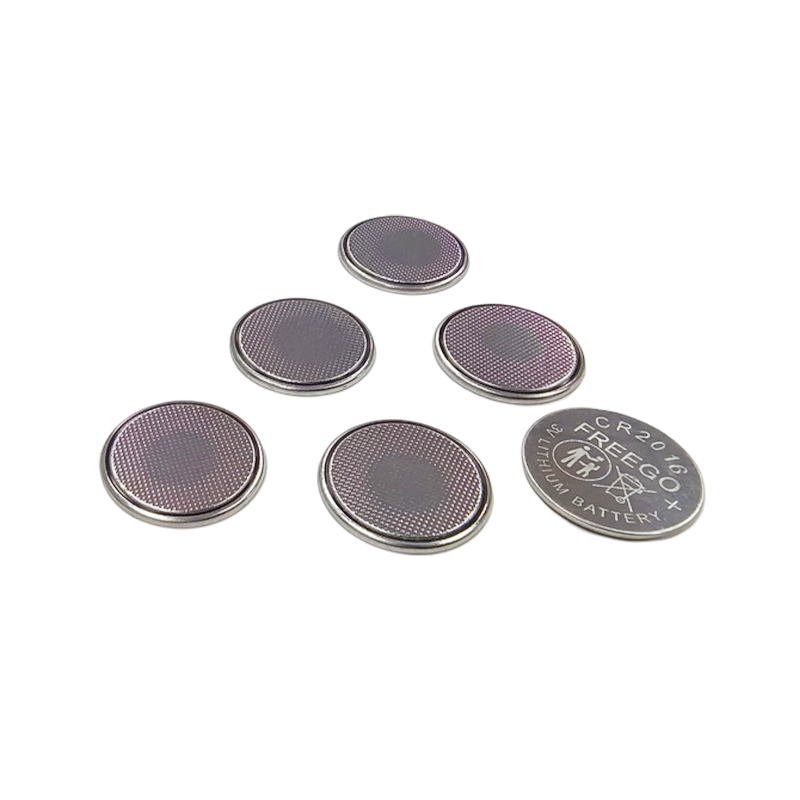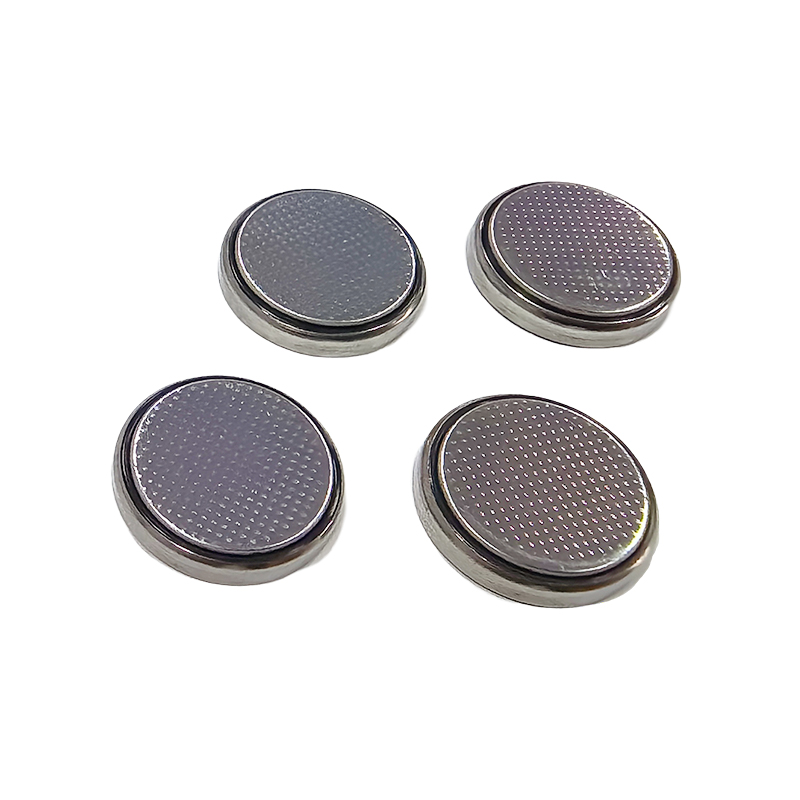How can a button battery achieve long-lasting and stable power output in a very small size to meet the long-term operation requirements of the equipment?
Release Time : 2025-05-08
As electronic devices are becoming increasingly miniaturized and portable, the button battery, with its extremely small size, can provide long-lasting and stable power output for various devices, meet the long-term operation requirements of the equipment, and become an ideal power source for many small electronic products.
The small size of the button battery comes from its unique structural design. It is usually composed of basic components such as the positive electrode, the negative electrode, the diaphragm, the electrolyte and the shell. The positive electrode generally uses active materials such as silver oxide and manganese dioxide, while the negative electrode is mostly lithium metal or other metal alloys. This compact structural design enables the button battery to integrate a complete power generation unit in a limited space. Its flat circular appearance, regular and uniform shape, is convenient for compact and neat layout in small devices, does not take up too much space, but can perfectly adapt to various precision instruments and tiny equipment, and provides strong support for the miniaturization and lightweight of the equipment.
In the process of achieving long-lasting and stable power output, the materials used in the button battery play a key role. Taking lithium batteries as an example, lithium metal as a negative electrode material has extremely high chemical activity and energy density. When the battery is connected to the circuit, lithium atoms lose electrons at the negative electrode and become lithium ions, which reach the positive electrode through the electrolyte and react with the positive electrode material to generate current. This chemical reaction continues inside the battery. Due to the characteristics of lithium, the battery can store a large amount of electrical energy in a small volume. At the same time, positive electrode materials such as manganese dioxide also have stable chemical properties, which can ensure the smooth progress of the reaction process, thereby providing a stable voltage output for the device.
The electrolyte also plays an indispensable role in the button battery. It is responsible for conducting ions to ensure that the current can flow continuously. High-quality electrolytes have good ionic conductivity and chemical stability, which can maintain stable performance during the operation of the battery, reduce internal resistance, and improve the charging and discharging efficiency of the battery. The diaphragm effectively prevents the positive and negative electrodes from directly contacting each other and causing a short circuit, while allowing ions to pass through, ensuring the normal progress of the chemical reaction inside the battery, and further improving the safety and stability of the battery.
The low self-discharge rate of the button battery is also an important factor in its ability to achieve long-lasting power output. The self-discharge rate refers to the rate at which the battery loses energy by itself when not in use. Compared with other types of batteries, the self-discharge rate of button batteries is very low. This means that even if the button battery is left unused for a long time, its remaining power can still meet the basic needs of the device. For some devices that need to be on standby for a long time, such as watches and car keys, button batteries with low self-discharge rates can store energy for a long time, reducing the need to frequently replace batteries due to long-term storage and exhaustion, greatly extending the battery life and meeting the needs of long-term operation of the device.
In addition, button batteries also have good temperature resistance and environmental adaptability. Some button batteries can operate in a wide temperature range, usually ranging from low to high temperatures, so they can work stably under various environmental conditions. Whether in cold winter or hot summer, button batteries can provide reliable power support for devices to ensure that the device can operate normally in various environments.
Through unique structural design, high-quality material selection, good electrolyte and diaphragm performance, low self-discharge rate, and good temperature resistance and environmental adaptability, button batteries achieve long-lasting and stable power output in a very small volume, meeting the needs of long-term operation of equipment. With its compact body, it provides powerful power support for the development of modern electronic equipment and has become an indispensable and important part of the electronic world.
The small size of the button battery comes from its unique structural design. It is usually composed of basic components such as the positive electrode, the negative electrode, the diaphragm, the electrolyte and the shell. The positive electrode generally uses active materials such as silver oxide and manganese dioxide, while the negative electrode is mostly lithium metal or other metal alloys. This compact structural design enables the button battery to integrate a complete power generation unit in a limited space. Its flat circular appearance, regular and uniform shape, is convenient for compact and neat layout in small devices, does not take up too much space, but can perfectly adapt to various precision instruments and tiny equipment, and provides strong support for the miniaturization and lightweight of the equipment.
In the process of achieving long-lasting and stable power output, the materials used in the button battery play a key role. Taking lithium batteries as an example, lithium metal as a negative electrode material has extremely high chemical activity and energy density. When the battery is connected to the circuit, lithium atoms lose electrons at the negative electrode and become lithium ions, which reach the positive electrode through the electrolyte and react with the positive electrode material to generate current. This chemical reaction continues inside the battery. Due to the characteristics of lithium, the battery can store a large amount of electrical energy in a small volume. At the same time, positive electrode materials such as manganese dioxide also have stable chemical properties, which can ensure the smooth progress of the reaction process, thereby providing a stable voltage output for the device.
The electrolyte also plays an indispensable role in the button battery. It is responsible for conducting ions to ensure that the current can flow continuously. High-quality electrolytes have good ionic conductivity and chemical stability, which can maintain stable performance during the operation of the battery, reduce internal resistance, and improve the charging and discharging efficiency of the battery. The diaphragm effectively prevents the positive and negative electrodes from directly contacting each other and causing a short circuit, while allowing ions to pass through, ensuring the normal progress of the chemical reaction inside the battery, and further improving the safety and stability of the battery.
The low self-discharge rate of the button battery is also an important factor in its ability to achieve long-lasting power output. The self-discharge rate refers to the rate at which the battery loses energy by itself when not in use. Compared with other types of batteries, the self-discharge rate of button batteries is very low. This means that even if the button battery is left unused for a long time, its remaining power can still meet the basic needs of the device. For some devices that need to be on standby for a long time, such as watches and car keys, button batteries with low self-discharge rates can store energy for a long time, reducing the need to frequently replace batteries due to long-term storage and exhaustion, greatly extending the battery life and meeting the needs of long-term operation of the device.
In addition, button batteries also have good temperature resistance and environmental adaptability. Some button batteries can operate in a wide temperature range, usually ranging from low to high temperatures, so they can work stably under various environmental conditions. Whether in cold winter or hot summer, button batteries can provide reliable power support for devices to ensure that the device can operate normally in various environments.
Through unique structural design, high-quality material selection, good electrolyte and diaphragm performance, low self-discharge rate, and good temperature resistance and environmental adaptability, button batteries achieve long-lasting and stable power output in a very small volume, meeting the needs of long-term operation of equipment. With its compact body, it provides powerful power support for the development of modern electronic equipment and has become an indispensable and important part of the electronic world.







